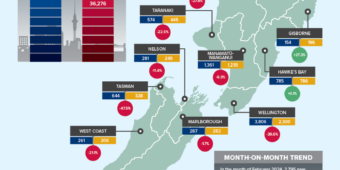BCITO responds to educational reforms
24 May 2019, Industry Updates, News

The Government proposal to centralise tertiary vocational training under one body has received various responses from industry stakeholders. In its official response, BCITO has outlined what it sees to be the positives and negatives of the proposed shake-up
In its submission, BCITO said there are positives in the establishment of a fairer funding system, better strategic investment in Vocational Education Training (VET) and sector coverage issues, possible improvements to off-job provision, and potential benefits for learners.
Considering these comments, it also believes the benefits aren’t enough to substitute the value of what is being left behind, with ITOs losing their training role.
BCITO’s submission listed elements of a working Vocational Education and Training system that must be incorporated, such as:
- Workplace learning remaining a major component.
- Industry maintaining direct ownership and control of training arrangements.
- Minimal disruption to business and productivity of employers that are involved in supporting training.
- Workplace learning involving a close face-to-face relationship between a training advisor and the business, and between a training advisor and the apprentice.
- Customisable training approaches to reflect the needs of particular sectors, individual firms, and specific apprentices.
- The ability for the industry to promote career opportunities and attract new people into relevant trades.
- Ensuring the training needs of smaller and specialist trades don’t get left behind by the system.
The submission expressed doubt that these elements could be upheld by the proposed Reform of Vocational Training (RoVE). It stated:
“Our model emphasises flexibility and adapting to the specific situation of a given business and learner, as well as to the needs of specific sectors within building and construction as a whole.
“Our industry does not believe that [education] providers are capable of maintaining such a model and is concerned that RoVE risks significant disengagement by employers from formal VET.”
The BCITO provided three proposals for the Government to consider, explaining ways it thinks learners can transition efficiently from ITOs to providers.
1. Clarifying different roles within VET
The first proposal said that Industry Skills Bodies (ISB) must have “genuine power within the TEC’s investment structures and over programme development”.
It also said that current ITO recognition criteria as being a good basis for establishing ISBs, with changes being made to “reflect both the stronger strategic role of the bodies and the need to ensure they maintain close connections to their industries”.
The criteria would require that the organisation demonstrates strong performance, sustainable coverage, evidence of industry backing, capability to identify and respond to industry skill needs, and capability in programme design and assessment.
2. Suggestions for the New Zealand Institute of Skills and Technology
BCITO suggested that a collegiate model would have bigger benefits in the future, but said that whatever the model ends up being, that a different culture is established than what currently exists “in much of the ITP sector”. It also mentioned that the Institute’s governing Council and Regional Leadership Groups must include business representatives.
3. Changing the funding system
The third proposal supported the concept of an integrated system for volumetric student-based funding. It said that the funding system should have three tiers:
- A flat rate for all on-job learning set higher than the current Standard Training Measures (STM) rate.
- A flat rate for all off-job learning set lower than current Equivalent Fulltime Student (EFTS) rates.
- A higher rate for apprenticeships and integrated learning.
Going forward
BCITO said that the ideal outcome would be for ITOs “to gain the increased strategic powers proposed in the new model but retain the ability to work with individual employers and workers”. It also said that focus must stay on encouraging cultural and behavioural change, more so than structural.
Minister of Education, Chris Hipkins, said that BCITO has been constructive in communicating feedback on the proposal, expressing its agreement and disagreement with different areas.
“Those who have engaged constructively with the process will have more impact on the end result,” said Hipkins.
Submissions and public consultation have concluded, with the Government aiming to roll out the decided changes in 2020.
What’s being proposed?
- That the country’s 16 major polytechnics fall under the remit of a single national body called the NZ Institute of Skills and Technology.
- ITOs be replaced with Industry Skill Bodies (ISBs).
- Education providers take on the responsibility for approx. 140,000 trainees and apprentices.
- A funding system that supports more work-integrated learning that resemble apprenticeships.
Register to earn LBP Points Sign in



